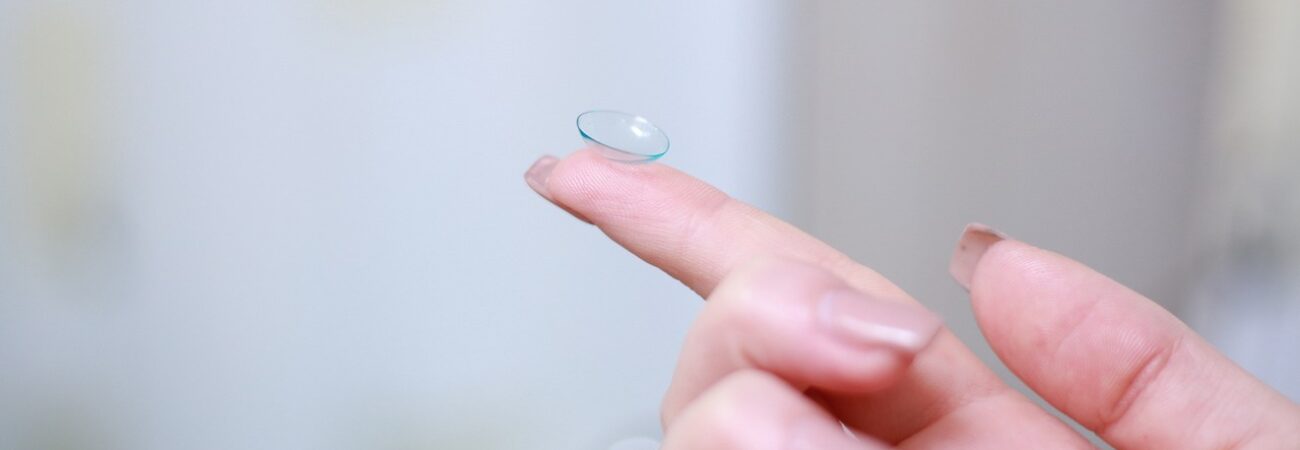Tired of glasses or contacts getting in the way during sports or work?
Orthokeratology (Ortho-K), also known as corneal refractive therapy (CRT), offers a nighttime solution that eliminates the need for regular replacements.
According to a Research Gate study, patients report higher satisfaction with Ortho-K compared to other contact lenses, as it can alleviate common eye symptoms associated with soft lenses, such as discomfort, dryness, grittiness, and scratchiness.
Interested in trying this corneal reshaping treatment? Let’s discuss what it is and see if it’s right for you.
What is Orthokeratology?
Orthokeratology is a form of overnight contact lens wear that uses specially designed lenses to temporarily reshape the cornea, improving vision. It is prescribed to correct refractive errors like astigmatism, short-sightedness and long-sightedness. It is also effective for childhood myopia.
How do Ortho-K Lenses Differ from Regular Lenses?
Ortho-K lenses are rigid gas permeable (RGP) lenses, different from regular soft contact lenses. They are specifically designed for cornea reshaping.
Here is a detailed comparison of Ortho-K lenses and regular lenses:
| Features | Ortho-K Lenses (RGP) | Regular Contact Lenses |
| Size | Large | Small |
| Wearing Time | Worn only at night | Worn during the day |
| Purpose | Reshapes the eye while worn overnight | Corrects vision while worn |
| Vision Quality | Provides clear vision throughout the day | Clear vision while worn |
| Comfort | Takes a few weeks to get used to | Usually comfortable within a few days |
| Durability | More durable, resistant to deposit buildup | Less durable, more prone to deposits |
| Cleaning Requirement | Regular cleaning needed | Regular cleaning needed |
| Replacement Frequency | One year | Varies, usually a few weeks to months |
| Sustainability | Effective for various vision issues, good for those who didn’t get desired results with soft contacts | Effective for common vision correction needs |
How Orthokeratology Works
1. Cornea Mapping
Similar to getting fitted for eyeglasses, your eye doctor will use a corneal topographer to measure your cornea. This machine reflects light off your eye’s surface, creating a detailed map of its curves.
2. Lens Designing
After creating the corneal map, your eye doctor will design personalised lenses based on your specific needs and corneal shape.
3. Lens Wearing
Ortho-K lenses are worn overnight to gently reshape your cornea by flattening its centre while you sleep. These lenses are designed to allow oxygen to pass through for healthy eyes.
4. Vision Correction
The cornea remains flattened even after removing the lenses in the morning, providing clear vision throughout the day. Regular wear is recommended, as the refractive error will return after 72 hours without them.
What Are the Pros and Cons of Ortho-K Lenses?
Pros
Slows Myopia Progression
According to a 2017 study, wearing Ortho-K lenses was effective in slowing myopia progression over a 12-year treatment period.
Customised to Your Needs
Ortho-K lenses are designed to fit your eye shape and correct your vision at any age. They can treat mild to moderate nearsightedness (myopia), farsightedness (hyperopia), age-related vision issues (presbyopia), and astigmatism.
No Need for Surgery
Ortho-K offers a non-surgical way to correct your vision compared to traditional glasses or contact lenses (including both daily and monthly options). It offers a less invasive approach to vision correction, making it suitable for vulnerable patients with vision issues, including children and the elderly.
Cons
Higher Cost
Ortho-K treatment can be more expensive in the long run as it’s not a permanent solution.
Longer Adjustment Period
Your eyes might feel sensitive for a few days initially as they adjust to wearing Ortho-K lenses.
Gradual Results
Achieving clear and stable vision with Ortho-K can take several weeks to a few months. Patience and realistic expectations are key during this process.
Ortho-K lenses provide a unique approach to managing myopia and other vision problems. Weighing the pros and cons can help you decide if it’s the right option for you. Consulting with your eye doctor is the first step.
Choosing the Right Eye Care Professional
Before booking an appointment, you might wonder if an ophthalmologist or an optometrist is best suited for your needs. At EyeSelect, we can help you navigate this decision.
How EyeSelect Can Help with Your Eye Care
Regular eye exams are essential for maintaining good eye health. EyeSelect‘s skilled optometrists offer comprehensive optometry services to address your eye care needs. We also provide informative blogs on eye health topics.
Frequently Asked Questions
How long does it take for the maximum Ortho-K effect?
It depends on your level of short-sightedness and astigmatism. Some achieve excellent vision after a night or two, while higher prescriptions may take two weeks or more. During this time, you might experience blurred vision, glare, and halos around lights. Glasses with a reduced prescription may be needed until your eyes are fully corrected. Mild glare and halos might persist even after maximum correction.
Is Ortho-K FDA-approved?
Yes, Ortho-K is FDA-approved as long as it is made by trained and certified eye care professionals. So better to ask your eye doctor about their certification and expertise.
How much does Ortho-K cost?
Ortho-K costs an estimated $600 to $1,200 per eye in Australia, with complex cases costing $2,000 or more for each eye. This does not include costs for replacement lenses, follow-up appointments, and lens solutions.
Can I have LASIK after Ortho-K?
Yes, you can have LASIK after using Ortho-K if you want permanent vision correction. Ortho-K is reversible, so you can stop using the lenses and wait a few months for your corneas to return to their natural shape before you undergo LASIK. Remember, like all contact lenses, Ortho-K lenses may have possible side effects and complications. Better to consult your eye doctor for details and ask them.





